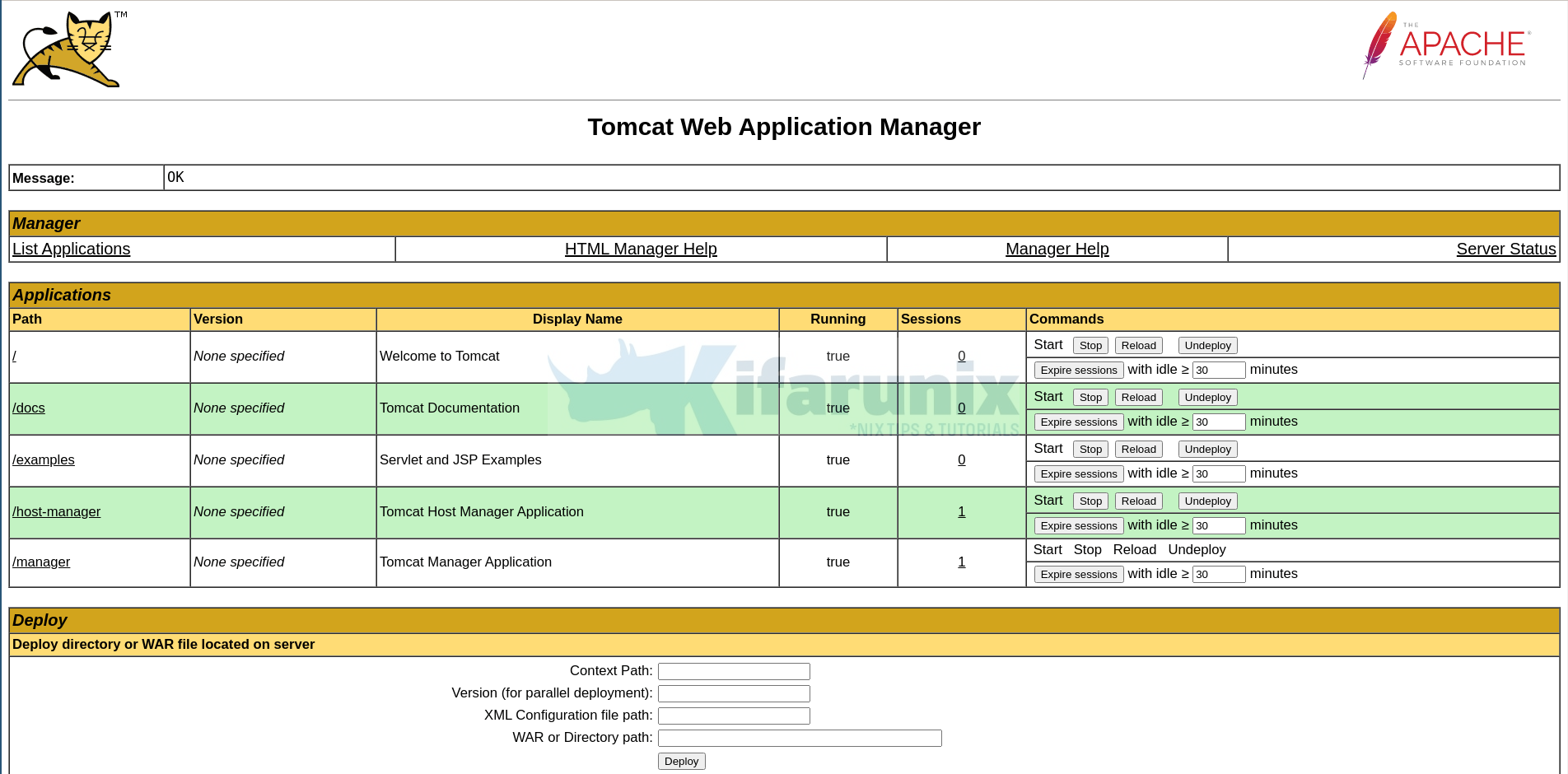

JSP Tag library pooling – Each tag markup in JSP file is handled by a tag handler class.From Jasper to Jasper 2, important features were added: At runtime, Jasper detects changes to JSP files and recompiles them.Īs of version 5, Tomcat uses Jasper 2, which is an implementation of the Sun Microsystems' JSP 2.0 specification.
#Apache tomcat default files code
Jasper parses JSP files to compile them into Java code as servlets (that can be handled by Catalina). Another Coyote Connector, Coyote JK, listens similarly but instead forwards its requests to another web server, such as Apache, using the JK Protocol. Coyote listens for incoming connections to the server on a specific TCP port and forwards the request to the Tomcat Engine to process the request and send back a response to the requesting client. This allows Catalina, nominally a Java Servlet or JSP container, to also act as a plain web server that serves local files as HTTP documents. Coyote Ĭoyote is a Connector component for Tomcat that supports the HTTP 1.1 and 2 protocol as a web server. Different implementations of Realm allow Catalina to be integrated into environments where such authentication information is already being created and maintained, and then use that information to implement Container Managed Security as described in the Servlet Specification. In Tomcat, a Realm element represents a "database" of usernames, passwords, and roles (similar to Unix groups) assigned to those users. Catalina implements Sun Microsystems' specifications for servlet and JavaServer Pages (JSP). I'm interested in whether anyone cares whether "alphanumeric" sorting is important.Tomcat 4.x was released with Catalina (a servlet container), Coyote (an HTTP connector) and Jasper (a JSP engine).Ĭatalina is Tomcat's servlet container. Some protection is necessary to prevent using resources that the administrator does not want to be used. If the client requests sorting, sorting will be done. This sorting is not optional (on the part of the server). Comparators are completely thread-safe and do not need to be instantiated for every request.Ĥ. But there is an opportunity for improvement, here.ģ. The complication of "directories always first" makes this less straightforward than it might seem. The number of comparator classes can probably be reduced. Protections against accessing WEB-INF are shuffled-around a little in a way which is less efficient than before. The same recipe reproduces the issue for Tomcat 7.0.57.ĭefaultServlet can be configured to generate listing in XML and apply an XSLT transformation to it.

It could be improved by offering a configurable sort order: Though my preference for the sort order is Note that files "resourceB.jsp" and "resourceF.jsp" are listed at the end of the file list, instead of any alphabetical order. test/webapp-fragments/WEB-INF/lib/resources2.jarĥ) Start Tomcat and access Actual behaviour: DefaultServletĪnd copy there the following file from source code (apache-tomcat-8.0.15-src.zip): It is a bit harder to see on Windows, where the file system lists the files in a sorted order, but here is a reproduction recipeĢ) Add the following lines to webapps/ROOT/WEB-INF/web.xml

It lists them in the order provided by the underlying resources implementation. When DefaultServlet has file listings enabled, in Tomcat 8.0.15 and 7.0.57 it does not sort the files.


 0 kommentar(er)
0 kommentar(er)
